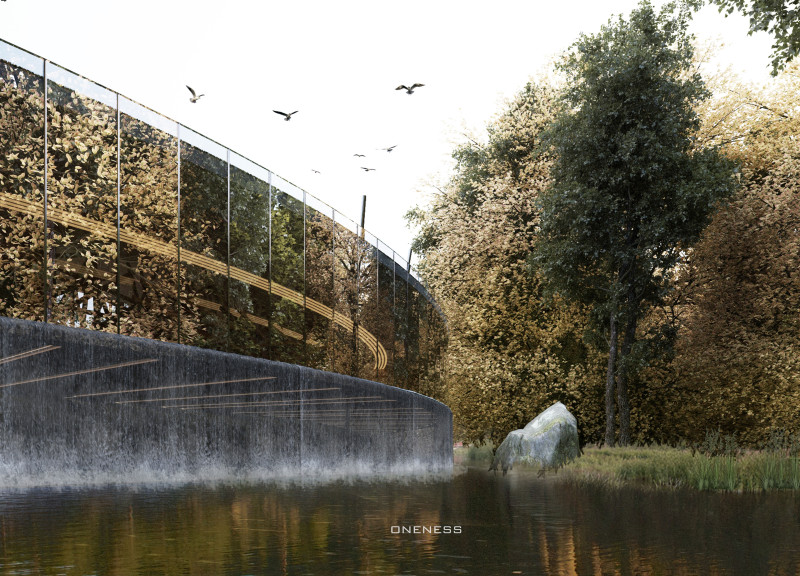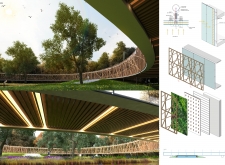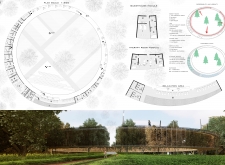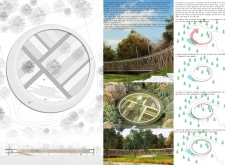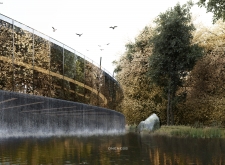5 key facts about this project
The project represents a multifunctional space that serves a diverse array of activities, emphasizing versatility in its design. It operates as both a public gathering place and a hub for various community events, providing an inclusive environment that encourages interaction and collaboration among visitors. Its architectural design reflects a keen sensitivity to the needs of its users, ensuring that every aspect of the structure contributes to its overall functionality without compromising on style.
A notable aspect of the design is its materiality, which plays a crucial role in defining the character and ambiance of the project. The choice of materials such as exposed concrete, sustainably sourced timber, and glass not only serves practical purposes but also enhances the visual appeal of the project. The use of exposed concrete conveys durability and stability, while timber elements add warmth and a tactile quality that invites touch. Expansive glass façades ensure ample natural light permeates the interior spaces, fostering a connection between the indoors and outdoors. This strategic use of materials highlights a commitment to sustainability, as many of the chosen components are environmentally friendly and contribute to the overall energy efficiency of the structure.
The architectural design incorporates various elements that enhance its functionality. Open floor plans allow for flexible use of space, accommodating a range of community activities from workshops to cultural events. Modular furniture can be reconfigured based on the event or gathering, further emphasizing the space's adaptability. Additionally, outdoor terraces and landscaped areas create inviting spaces for relaxation and interaction, seamlessly blending the built environment with nature.
Unique design approaches are evident in the architectural profiles and spatial organization of the project. The building's form transcends traditional layouts, employing asymmetrical lines and dynamic shapes that draw the eye and encourage exploration. This choice reflects a modern aesthetic while being mindful of the surrounding landscape, ensuring that the building sits harmoniously within its setting. The integration of green roofs and permeable surfaces further supports environmental goals, promoting biodiversity and reducing urban heat.
Landscaping is also carefully considered as an extension of the architectural narrative. Thoughtful plant selection and strategic placement serve not only aesthetic purposes but also contribute to ecological sustainability and the enhancement of the microclimate. The coexistence of built structures and green spaces invites users to engage with their surroundings, promoting well-being and a sense of belonging.
In essence, this project encapsulates a comprehensive approach to contemporary architecture, where design transcends mere appearance to focus on the experience of the user. It embodies a commitment to sustainability through material selection and landscape integration, demonstrating how architecture can positively impact communities. Readers are encouraged to delve deeper into the project presentation to explore detailed architectural plans, sections, and innovative designs that illuminate the collaborative thought process behind this remarkable work of architecture. Engaging with these elements will provide further insights into the transformative potential of this architectural endeavor.


